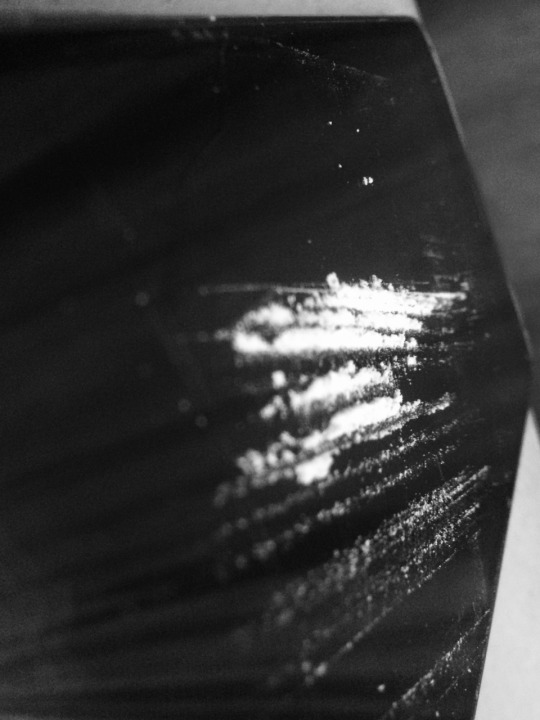#methice
Text
I think medic does hard drugs
#tf2#team fortress 2#tf2 medic#i love men who are old enough to be my father#have you guys seen the tiktoks with methic? that’s where this thought came from
24 notes
·
View notes
Text
new featherscales oneshot just dropped 😱😱😱😱😱
9 notes
·
View notes
Text



Love these creatures
The methicals
16 notes
·
View notes
Text
Kinktober -2023
read it on AO3 at https://archiveofourown.org/works/50477023
by Methical
My first time taking part in Kinktober. Don't worry I will try to keep up everyday. Prayers for everyone.
Words: 1872, Chapters: 1/31, Language: English
Fandoms: Undertale (Video Game)
Rating: Explicit
Warnings: Rape/Non-Con
Categories: F/M
Characters: Sans (Undertale), Papyrus (Undertale)
Relationships: Sans (Undertale)/Reader, Papyrus (Undertale)/Reader
Additional Tags: Alternate Universe - Underfell (Undertale), Alternate Universe - Underswap (Undertale), Alternate Universe - Horrortale (Undertale), Alternate Universe - Dreamtale (Undertale), Alternate Universe - Errortale (Undertale), Killer Sans (Undertale) - Freeform, Dusttale Sans (Undertale), Dreamswap Nightmare Sans (Undertale), Shattered Dreamtale Sans (Undertale), Alternate Universe - Megalosomnia (Undertale), Alternate Universe - Sciencetale (Undertale), Xtale Sans | Cross (Undertale), Epictale Sans (Undertale), Leather Kink, Breast Fucking, Plot What Plot/Porn Without Plot, Ecto-Genitalia (Undertale), Ecto-Tongue (Undertale), Leashes, Clothes Sometimes Stays On, Dubious Consent, stuck in wall, Trapped, Breeding, Lactation Kink, Milk And Cookies, Fucking Machine, Humiliation, Crying Kink, Costumes, Size Kink, Orgasm Denial, Foursome - F/M/M/M, Spanking, Uniform Kink, Mind Control, Ecto-Tentacles (Undertale), Bondage, Face-Sitting, Sex Toys, Edgeplay, Masturbation, Watching, S&M, Mommy Kink, Breathplay, Overstimulation, Fresh Sans (Undertale) - Freeform, Dreamtale Sans | Dream (Undertale)
read it on AO3 at https://archiveofourown.org/works/50477023
1 note
·
View note
Text
Review: Once Upon a Fever by Angharad Walker
Review: Once Upon a Fever by Angharad Walker
Goodreads | Bookshop.org
Since the world fell sick with fantastical illnesses, sisters Payton and Ani have grown up in the hospital of King Jude’s.Payton wants to be a methic like her father, working on a cure for her mother’s sleeping fever. Ani, however, thinks the remedy for all illness might be found in the green wilderness beyond the hospital walls.When Ani stumbles upon an imprisoned boy…

View On WordPress
1 note
·
View note
Text
Odisha - The land of God
Odisha formerly Orissa and Eastern India state on the coast of the Bay of Bengal is known for its tribal cultures and its many ancient Hindu temple. The capital Bhubaneswar is home to hundreds of temple. The Lingaraj temple complex the land of Odisha occupies a unique place in the order of the Indian states earlier Odisha was also known as Kalinga By Nature Orissa has been gifted a 482 km coastal line. Golden beaches the time rivers Mighty waterfalls vegetative wildlife with forest glad blue heel of eastern Ghats. Orissa is the 8 largest state by area and 11th largest by population is located in Eastern India. It is arounded by neighbouring states like West Bengal Jharkhand Chhattisgarh and Andhra Pradesh. The lake Chilika is a part of coastal plain. The highest point in the state is Deomali. The glorious Ancient History of Orissa has been mentioned in famous Texas like Mahabharat Vayu purana and most important the King Ashoka has mentioned about "Kalinga". On first April 1936 Odisha was plated to separate provinces. In late 2011, the state name was officially changed from Orissa to Orissa and now we can proudly say that we are the natives of "Odisha" not Orissa and we speak "Odia" not Oriya.
The Lingaraj temple, 11th century is the largest temple of the city Bhubaneswar. Here the Lord Shiva is washer as Harihara. The Jagannath temple of Puri and shrines Lord Jagannath in the coastal Temple full stop the temple is world famous for it annual Chariot festival Rath Yatra. Lord Jagannath is the lord for all Odia hearts what is the land of rich in art and culture Pattachitra, Rock painting, sand art applique work as a famous work in the whole world.
The famous dance form of Orissa is Odissi it is a traditional dance form of Odisha it was originally performed by devadasi is. The dance basically involves a methical story symbolic costume and it gives avive as all. I have also performed Odissi dance form in the state level as a representation of the school in the state level and that give me immense pleasure and proud of my state that I am from has a wipe and the rhythm The Beat has obviously prove that the dance form is the best of all. Odisha is not only famous for its Temple but also for the celebration of festival there is a line famous among the odias that we have 13 festivals in 12 months. The motto of all the festival is to bring people together from all backgrounds and celebrate the joy and glory up for the sir togethering. Annual charted festival one of the city of Odisha is Road Kerala where I will leave the city has been collected as the Smart City in the third phase of the national Smart City in the year 2016. From clockwise the Hanuman vatika where a large and a huge Hanuman god is built over 75 feet huge and long by length since every state of India has its diversity and forms so do Orissa. It has various done formed, tribal cultures and amazing tasty who was as well. Naveen Patnaik is 4 times selected as the chief minister of Odisha. The status governed by The council of minister which flood by the Chief Minister.







1 note
·
View note
Text
philosophies + herb common names + brythonic deities + natural sattelites BUT excluding "sm"
Absology Absurdish Absurvi Acquiet Activisuces Actur Adsullo Adsullosop Adsullower Aeriapus Aericurry Aerintelia Aestote Agnos Agronbasil Aladus Alationa Albioriel Albiosophy Ambis Ambisanos Anankou Anarduinna Ancience Andanleaf Angeliaq Annamary Annamora Antia Antipsis Antis Antressimin Antucarus Aoedeimone Appliety Arabushido Ardseed Arint Arisroot Artarrage Artemonos Artia Asara Asaracret Ascietia Aterius Atheology Authodish Autics Autology Autonius Avender Aventheory Avenus Avicentia Axidius Baathee Barberope Bebpeppero Biblicalyke Briandraste Briel Brigatobius Businoe Calnihilos Calontina Calous Camna Campestla Camsrazor Capertrida Capetus Carabus Cardamon Cardamos Cartarie Cartemology Carus Castrumea Cayennel Cayennessis Celemma Celenus Cellene Cennel Ceretle Chaoststris Charpo Cheradigm Chicale Chingerme Chings Chris Chrisroot Christe Christea Christic Cicordelia Cicorice Cilaton Cimbriel Cimbrigant Cinna Claraway Clovage Clovens Cology Communda Communitan Confucius Contia Contina Contology Corditic Corialimede Costia Cressidius Cubebhiona Culantia Culantina Culari Culary Cumea Cupita Cupite Cural Curry Curydomede Daphy Darwint Defenus Demon Dentphilos Deontro Despike Didamom Dillumint Dionn Dogmios Dysnomin Earmin Ecumea Egomo Eladus Elarhumanet Elari Elaterianca Elder Elings Empiris Encelation Epazor Epicurydome Epistoriton Eripatea Erudianca Ethyme Euanthropa Eudaimos Eudophy Eurotheus Extiona Extres Fanics Fascennia Fengs Fenus Ferdish Filiperissa Fingalaunus Formaltruis Formathea Forminence Founda Foundina Frastia Freekphilia Ganthrymr Germe Gingaku Gingalade Gingerme Globalm Gotheology Gotheory Gothics Greek Greens Greidens Halaunus Harverseed Hasil Hatobius Hedonn Hedonnus Herbertaris Herberty Hetis Himal Himas Holass Holassa Holipeppers Hology Holygamy Huacati Huethics Humace Humanpepper Hyssophy Illenus Illower Illumint Illweed Inculo Informalthe Infornjot Innatto Instremisia Instrumene Intalrelia Interic Inthrophy Intummystia Irrhoe Irrhoebe Jesuis Judaimos Junillweed Junise Junivemary Kalemon Kalleneury Kallio Kallseeds Kalypso Kanentia Kanthea Kantic Karinomia Kelatur Laraway Latus Lavella Lavellia Lavens Legale Lemma Lemology Lemon Lemona Lemonbark Lemongranca Lemonius Leucelati Leuceleaf Leuces Leucetia Libasil Libero Limede Linde Liternus Machiatry Maponoe Maranshui Mastaranca Mathe Mathisonry Megal Menics Mercalla Mercalm Mercurannus Mereaniseed Merius Methi Methics Metida Mimal Miraq Moder Moderhea Monbari Monbasil Moniron Monis Monosthesis Moram Morax Morfatis Multilati Munives Natur Naïvers Nemelene Neoplanthus Neoplati Neoplationa Neoplaturn Neopy Nepepper Neress Neretle Nesens Neurothisto Neury Neurydome Newagenia Noder Nomara Nomaradigm Ophysics Opporiel Opporth Organo Orthosithea Pancamulus Pancience Panda Pandatione Pandrass Pandrastary Pantheory Pantris Parabanda Parabushido Pasil Pasio Patris Peppers Pericelade Peron Persale Pessia Phenologic Phenome Phenometia Platetral Platobius Porthosie Portune Posie Positics Posthe Posthus Praxidius Premisia Preseed Progreek Progreens Promenia Promseed Promseeds Prope Prophy Proteleaf Pythalder Quantinus Quiet Reconstrum Reductic Refornjot Reladus Rherberary Robos Romal Rosalegal Sabeliabi Safflowherb Saffronbark Salita Sassa Satura Savocadros Scanextiona Secumentic Secumina Semas Shamaka Shamarus Simint Simulus Sineflower Singaku Singshui Skathicoll Society Sophy Spers Spikena Spiris Sponus Strinoe Subjection Suces Sufimethics Sumantia Super Superse Surdiano Survaka Survi Suttunilant Suttuniper Sychives Sycory Synoper Tariaper Tariel Tauthone Tellacy Tellianet Tetranda Thagon Thagore Thaiban Thalatonnus Theory Thropy Tranus Tritionis Tritionise Tritionn Turalrel Unita Univeid Univeriste Uticreseed Utodida Verethics Verroot Vetebos Veteric Vhete Vhetervenus Vindina Virotercalm Virturme Vitan Westrebis Wiccandens Yarroot Zurvi
#name stash#444names#444 names#dnd names#character names#random character names#markov namegen#markov name generation#markov#markov gen
0 notes
Text
Methic Engineering Limited Job Recruitment 2022/ 2023 for a Maintenance Officer – Apply Here
Methic Engineering Limited Job Recruitment 2022/ 2023 for a Maintenance Officer – Apply Here
Methic Engineering Limited Job Recruitment for a Maintenance Officer – Methic Engineering Limited is recruiting qualified candidates to fill the vacant position of a Maintenance Officer at the firm. Interested persons should apply below.
(more…)

View On WordPress
0 notes
Text







Te has ido y tengo que estar drogada...
#lines#drugs#dorgas#crico#cristal#crystals#metanfetaminas#methice#ice#inahalar#anfetamina#pupils#pupilas#girl#coke#cocaine#cocaína
58 notes
·
View notes
Photo

HBD @methodmanofficial . Enjoy your day. Definitely gonna smoke one to celebake. Ticaaalllllll! . . . #methodman #tical #johnnyblaze #hottnikkels #mrmef #methical #pantyraider #calz #silaspsilas #killerbees #wutang https://www.instagram.com/p/B9O53QLpMpC/?igshid=izk4fes286vs
#methodman#tical#johnnyblaze#hottnikkels#mrmef#methical#pantyraider#calz#silaspsilas#killerbees#wutang
0 notes
Photo

METH & BUSTA. 💥💥💥 @methodmanofficial @bustarhymes #hiphop #classichiphop #hiphopculture #vinyl #goldenera #realhiphop #lyricist #dj #hiphopshirts #diggininthecrates #beatmakers #producers #stacksrundeep #stacksunltd #CliffordSmith #MethodMan #MZA #JohnnyBlaze #Methical #Tical #TicallionStallion #IronLung #HotNikkels #ThePantyRaider #WuTang #BustaRhymes #LONS #BusABus #Flipmode #ConglomeriteEnt https://www.instagram.com/p/Btf9Yh4gK-E/?utm_source=ig_tumblr_share&igshid=75317boimxdn
#hiphop#classichiphop#hiphopculture#vinyl#goldenera#realhiphop#lyricist#dj#hiphopshirts#diggininthecrates#beatmakers#producers#stacksrundeep#stacksunltd#cliffordsmith#methodman#mza#johnnyblaze#methical#tical#ticallionstallion#ironlung#hotnikkels#thepantyraider#wutang#bustarhymes#lons#busabus#flipmode#conglomeriteent
0 notes
Text

Methically compromised, one whose ethics are compromised by the use of methamphetimine
1 note
·
View note
Note
for how long do you have this blog ? who is your chaildhood crush? ♡^♡ what methical creature would you be? fav ost of all time? fav hoppy? top 10 fav video games? 10 facts about yourself?
Wow, that is quite a lot. Thanks so much for all the questions! :3 I’ll put a keep reading thing because it’s gonna be very long.
Ask me anything, guys!!
I’ve had this blog for almost 2 years and a half, in June it will be 3 amazing years!
My childhood crush was Tom Welling (Clark Kent in Smallville) and nowadays when I rewatch the show I still fall for him because he was so cute and handsome and kind and sweet!
I would like to be a dragon. I freaking love dragons, they’re so big and mighty and majestic and have magic powers and breathe fire and most importantly, they can fly!
I really really like the LOTR soundtrack, but I’m a nerd that really pays a lot of attention to OSTs in everything and I also really like the one sfor FFVII, Harry Potter, FFX, Shenmue, FFXV, Zelda, Witcher, Undertale… not to mention Disney!
My favorite hobby is probably hanging out with my friends because we’re all pretty busy and don’t get to do it too often. Besides from that, writing and reading and watching shows/movies/animes and playing videogames!
Talking about videogames, there are many more I like and couldn’t fit in there, but here’s my top 10 as you asked:
Shenmue (hardly anyone knows this one, but they announced Shenmue 3 on E3 after 13 years of waiting for a new game and I’m hyped af!)
The Last of Us
Final Fantasy VII
The Longest Journey
Kingdom Hearts
Witcher
Final Fantasy XV (yup, big fan of the series, I know)
Final Fantasy X
Undertale
The Legend of Zelda: Twilight Princess
And 10 facts about myself, quite random too, what first came to mind:
I am left-handed
I swear a lot (oddly enough, always in English even though I’m Spanish hahah)
I play guitar (both acoustic and electric) and piano
I sleep hugged to a cushion because I want cuddles
I write books and aspire to get them published some day
I don’t leave home without my stories notebook (just in case)
Nor without my headphones because music is my life
I have tons of fandom related necklaces (Harry Potter, Death Note, Lord of the Rings, Uncharted, Final Fantasy VII, VIII and X, Fullmetal Alchemist…)
I collect little bouncy balls (like this one) and my friends and family sometimes get me some
I’m a proud Hufflepuff!
1 note
·
View note
Video
Happy #WuWednesday 👐🏾🐝 Hit 'Em High (The Monstars' Anthem) B-Real, Busta Rhymes, Coolio, LL Cool J, and Method Man from the Space Jam Soundtrack #MethodMan aka #TheMethodMan aka #Meth aka #Methical aka #JohnnyBlaze aka #Tical aka #TheTicalionStallion aka #IronLung aka #MrMef aka #HottNikkels aka......... #YouGetThePoint
#ironlung#hottnikkels#themethodman#methodman#johnnyblaze#methical#yougetthepoint#wuwednesday#meth#mrmef#tical#theticalionstallion
0 notes
Text
Preliminary Characterization of a Nisin Z Bacteriocin with Activity Against the Fish Pathogen Streptococcus iniae- Juniper Publishers
Abstract
This is a preliminary characterisation of a bacteriocin, BacL49 produced by Lactococcus lactis ssp. lactis. This bacteriocin is significant due to its activity against Streptococcus iniae, a bacterial pathogen causing severe economic losses in the global aquaculture of various fish. Spot-on-lawn and microtitre plate assays were used to test antagonistic activity of the bacteriocin. BacL49 is heat and pH stable (100 °C for 60min, pH 2.5-9.5), and sensitive to proteinase K, a-chymotrypsin, trypsin and papain. BacL49 has a bactericidal mode of action and is produced during late log phase growth. BacL49 exhibits a broad activity spectrum against S. iniae, antagonising 93.75% (45/48) of S. iniae isolates collected from a variety of hosts and environments. The apparent molecular masses of the active protein components determined by sodium dodecyl sulfate-polyacrylamide gel electrophoresis are 5 and 54kDa. Molecular analyses were performed to locate the genetic determinants of BacL49. PCR of chromosomal DNA successfully amplified the structural gene encoding the precursor of nisin. Subsequent analysis of nucleotide sequences of the PCR products revealed it to be identical to the nis Z structural gene of nisin Z. There is a paucity of reports examining the inhibition of S. iniae by a lactococcal bacteriocin or even L. lactis as an aquacultural probiotic. This is one of the first studies to identify nisin genes in a strain of L. lactis exhibiting activity against S. iniae. BacL49 is a candidate biocontrol agent for mitigation of this important fish pathogen.
Keywords: Bacteriocin; Lactococcus lactis; Probiotic; Streptococcus iniae; Nisin Z
Go to
Introduction
Streptococcus iniae is one of the most economically important bacterial pathogens causing streptococcosis in fish. Globally, economic damages have been in excess of US$100 million per year [1] with as much as 70% loss in annual production in certain fish cultures [2]. S. iniae causes disease and mortality in at least 30 species of fish in marine, brackish and freshwater environments [3,4]. Outbreaks of S. iniae typically occur in warm-water, cultured situations throughout the world including Australia, Bahrain, Israel, Japan, Korea, Spain, Italy, and the United States [4,5-10]. Epizootic incidents have also been reported in wild populations [11,12], the most notable being the 1999 and 2008 Caribbean fish kills [13,14]. Zoonotic infections of S. iniae, normally caused by percutaneous injuries sustained during raw seafood preparations, have been reported in Canada, China, Hong Kong, Singapore, Taiwan, and the United States [15]. Prevention and treatment of S. iniae in aquaculture remains difficult, particularly with the industry seeking safer alternatives to antibiotics and vaccines. Antibiotics, including erythromycin have previously been successful in treating streptococcus is in fish [16]. Nonetheless, the use of antibiotics in aquaculture is gradually being eschewed due to widespread development of antibiotic resistance in the environment and in cultured fish, which causes consumer concern [16-18]. In some cases, antibiotics are also believed to merely suppress clinical symptoms without eliminating the infection, thereby promoting the development of "carrier fish" [1].
Research devoted to creating effective vaccines for prevention of S. iniae suffered a major setback when a novel serotype of S. iniae caused severe outbreaks in Israel amongst vaccinated rainbow trout (Oncorhynchus mykiss) [19,20]. Since then, commercial vaccines against S. iniae have been marketed, but are very limited geographically [21,22]. Alternative vaccines have yielded successful results but are still undergoing testing [2325]. In spite of this progress, the task of effectively vaccinati Oceanogr Fish Open Access J 3(2): OFOAJ.MS.ID.555610 (2017) each individual can be tedious, expensive, and even stressful for the fish [26]. Vaccinations can be futile when applied to juvenile fish that may not be fully immunocompetent [27]. Additionally, S. iniae is capable of surviving in the aquatic environment without a host [11,28,29] and this was speculated to have been a factor in the evolution of the new serotype by allowing the bacterium to evade the immune response of the vaccinated fish [19]. Furthermore, the outbreak in Israel is evidence of serotype diversity that could enable S. iniae to eventually overcome yet another vaccine. Thus, the quest continues for a long-term solution that can be universally and easily applied throughout the aquaculture industry [25]. Chemical-free "green solutions" appear to be the next era of therapeutics for preventing bacterial epizootics in fish [17]. Probiotics, either in the form of whole cells or cell components such as bacteriocins, are anticipated as being effective replacements for antibiotics and chemotherapeutics to fight infectious diseases [30]. Bacteriocins are a group of proteinaceous molecules that are biologically active against bacteria that are closely related to the bacteriocin producer, while the producer is immune [31-33]. Ubiquitous across all bacterial genera, these ribosomally synthesized peptides confer a selective advantage to their producers [31,32,34]. Bacteriocins are recognized as potentially useful agents in the control of bacterialinfections due to their effectiveness, non-toxicity and relatively cheap production [32,35,36]. Only two published studies on bacteriocins have tested S. iniae as an indicator species [37,38].
An inhibitory substance, identified as bacteriocin BacL49, was found during experimentation with the library of S. iniae and other aquatic bacteria from James Cook University (JCU). The bacteriocin was produced by a strain of Lactococcus lactis ssp. lactis and was observed to inhibit a large spectrum of S. iniae isolates. L. lactis, along with the rest of the lactic acid bacteria (LAB) are considered the most prolific of all the Gram-positive bacteriocinogens [32,39]. A versatile species, variousstrains of L. lactis can produce an assortment of bacteriocins that are predominantly encoded on plasmids [40-43]. Some L. lactis strains produce the bacteriocin nisin, a small (<5kDa), membrane-active member of the Lantibiotic class of LAB bacteriocins capable of antagonistic activity towards a wide range of Gram-positive bacteria [44-46]. Nisin is heat-tolerant (115-121 °C) at low pH levels, making it an ideal preservative in pasteurised and acidic food products [45,46]. Being "generally regarded as safe," nisin has achieved worldwide recognition as a non-toxic food additive in over 50 countries [31,32,45]. As produced by various strains of L. lactis, nisin occurs as natural variants with designations A, Z, Q, and F [47-49]. 106 Unlike most plasmid-encoded bacteriocins produced by L. lactis, nisin is encoded on a conjugative transposon [50-52], a chromosomally- associated segment of DNA with the capacity to repeatedly insert into and mobilise plasmids and genomes [52,53]. Thus, one objective of this study was to identify the genetic determinants of the bacteriocin BacL49 through assessing the prevalence of plasmids in L. lactis subsp. lactis L49 and examining the bacterial chromosomal DNA for nisin genes. This study also provides a brief characterisation of bacteriocin BacL49 and highlights the potential of this substance as a green solution for S. iniae infections in fish.
Go to
Materials And Methods
Source and identification of BacL49 producer. A lawn of S. iniae AS-04-1524#1 (JCU isolate S42; Table 1) was observed as a mixed culture, with one distinct colony type antagonizing the growth of the other. Both isolates were identified using a PCR assay for the lactate oxidase (lctO) gene of S. iniae using the primer combination LOX-1/LOX-2 [54], and a 16S rDNA PCR assay using universal primers 27F/1492R. PCR products were cleaned and sequenced by Macrogen Inc. (Korea). The 16S PCR assay returned a sequence 99% identical to Lactococcus lactis ssp. lactis in BLAST. According to sequencing, the antagonizing bacterium was identified as L. lactis L49, originally isolated from a moribund sleepy cod (Oxyeleotris lineolatus) at JCU. The inhibitory substance produced by L. lactis L49 was designated as BacL49.
*Altered TAAHL accession number. Changes were made for unknown reasons by previous researchers; it is likely these isolates are from the correct animal accession but the final number has been altered (ie. -9 and -11). **Invalid TAAHL accession number.
Bacterial growth and isolation of BacL49. Unless otherwise stated, bacteria were propagated aerobically at 28 °C in heart infusion broth (HIB) or agar (HIA) produced by the addition of 1.5% technical agar to HIB. Bacterial lawns were made by seeding HIA plates with 1ml overnight growth of bacteria, removing excess culture and allowing lawns to dry at room temperature. To produce cell-free supernatant (cfs) containing BacL49, L. lactis L49 was grown aerobically at 28 °C for 10-12h, then centrifuged at 4300g for 5min and filtered through 0.45|im. Aliquots of cfs were stored at 4 °C.
135 Assays for antagonistic activity. The activity of L. lactis L49 against 48 isolates of S. iniae (Table 1) was determined by an altered deferred antagonism method [55]. Briefly, an overnight L. lactis L49 culture was streaked in a single line on an HIA plate with a sterile loop. Bacterial isolates and a control of uninoculated broth were then streaked with sterile loops in parallel at right angles to L49. Zones of inhibition were measured after incubation for 16h. For interest, streak plates were made to determine the activity of L. lactis L49 against B antibiotic resistant human pathogens including E. coli B597, E. coli 53e, community acquired methicillin-resistant Staphylococcus aureus and Streptococcus pneumoniae. For these human isolates, one plate was incubated at 37 °C with CO2 and the other was incubated aerobically at 37 °C to ensure sufficient growth of the pathogens. Zones of inhibition were measured after 24h.
146 Antagonistic activity of BacL49 was detected qualitatively on solid media using a spot-on-lawn assay [56]. Antagonistic activity was quantified in liquid media using a modified microtitre plate assay [57]. The indicator culture was grown to an optical density of approximately 0.2 measured at 540nm, and added to two-fold dilutions of the growth medium or cfs (treated or untreated) in duplicate 96-well round bottom plates. Plates were incubated aerobically for 3h at 28 °C and the optical density measured. Antagonistic activity was defined as the reciprocal of the dilution causing 50% growth inhibition (determined by optical density) relative to the control culture without cfs (AU = arbitrary units). S. iniae S23 was used as the indicator strain for all spot-on-lawn and microtitre plate assays due to its high level of sensitivity to BacL49.
Effect of heat, pH and enzymes on BacL49 activity. To determine the heat stability of BacL49 activity, cfs samples (pH 5) were heated at 100 °C for 10, 20, 30 and 60min. Samples were cooled to room temperature before spot-on-lawn and microtitre plate assays. To determine the effect of pH on BacL49 activity, cfs samples were adjusted to pH levels between 1.5 and 9.5 using 1N NaOH or HCl. Samples were incubated with agitation for 2h, then readjusted to pH 5 (the pH level of untreated cfs following incubation) before spot-on-lawn and microtitre plate assays. To determine the effect of different enzymes on BacL49 activity, cfs samples were adjusted to pH 7.0 and treated to a final concentration of 2mg ml-1 with the following enzymes: proteinase K (40 units mg-1), a-chymotrypsin (59.3 units mg- 1), trypsin (2.6 units mg-1), pepsin, papain (19 units mg-1), and catalase (1340 units mg-1). Samples were incubated at 37 °C with agitation for 2h, then at 100 °C for 5min to deactivate enzymes. Remaining antagonistic activity was measured using the spot- on-lawn assay. An untreated cfs sample was used as a control in all assays.
170 Kinetics of production and activity. The kinetics of BacL49 production by L. lactis L49 were investigated by measuring the growth of the bacterium and activity of BacL49 produced over the same period. Overnight growth of L. lactis L49 was added to HIB (3.75% volume) and the culture was incubated with agitation. The optical density of the culture was measured at 600nm every hour until 12h, then periodically to 28h. At each reading, 1ml culture was removed to produce cfs, which was stored at 4 °C. Antagonistic activity was measured using a spot- on-lawn assay following the collection of all cfs samples.
The activity of BacL49 was determined as either bacteriostatic or bactericidal by measuring the growth of indicator strain S. iniae S23 after the addition of BacL49. Early log-phase growth of the indicator strain was distributed into triplicate 10ml aliquots. One ml of cfs was added to two indicator cultures and HIB was added to the remaining control culture. Optical density was measured at 600nm over 24h. To measure cell viability in a treated culture, mid log-phase growth of the indicator strain was distributed into duplicate 10ml aliquots. One ml cfs was added to one aliquot and HIB was added to the control. Optical density measurements at 600nm were taken over time and 10-fold serial dilutions were grown on HIA to measure cell forming units (cfu) of the indicator strain in both cultures at 48h.
Protein purification. L. lactis L49 was grown overnight in HIB previously filtered through Millipore type HA filters (to remove unwanted proteins from the media). A portion of the cfs produced from this culture was treated with ammonium sulphate in two stages. For the primary precipitation, saturated ammonium sulphate solution was slowly added to 100ml cfs while stirring to 60% saturation at room temperature. The solution was agitated 12h at 4 °C, then centrifuged at 4500g for 30min at 4 °C. The precipitate was resuspended in 10ml sterile distilled water. A small portion was removed and stored at 4 °C for the activity assay. Saturated ammonium sulphate solution was added to the remaining primary solution while stirring to 80% saturation at RT. This solution was agitated 12h at 4 °C, then centrifuged at 4500g for 30min at 4 °C. The secondary precipitate was resuspended in 1ml (1% original volume) sterile distilled water and stored at 4 °C. The activity of the ammonium sulphate precipitated (primary and secondary) proteins was tested with a microtitre plate assay.
Approximate molecular size of BacL49 was determined by tris-tricine sodium dodecyl sulfate- polyacrylamide gel electrophoresis (SDS-PAGE). Aliquots of the partially purified protein samples and untreated cfs were prepared with TruSep tricine SDS sample buffer and run on 16% tris-tricine gels with a low MW prestained protein ladder (Fermentas, Australia) at a constant 150V. Gels were silver stained using a Silver Stain Plus staining kit (BioRad, Australia) according to the manufacturer's protocol 208.
Proteins separated by SDS PAGE were eluted from the gel using a modified protocol from Busarcevic et al. [58]. Following agitation at room temperature overnight, the eluted samples were centrifuged at 10,000g for 5min and the supernatants concentrated by vacuum at 33 °C for 20min. Two controls were used: one elution made with a slice of gel from an unused well lane (containing no protein) and one with elution buffer only. Eluted samples were assayed for antimicrobial activity with a spot-on-lawn assay.
DNA purification. Isolation of plasmid DNA was carried out using the Wizard® Plus SV Minipreps DNA Purification System (Promega, Australia). Low-copy number plasmids were assumed for all strains. Genomic DNA isolations were carried out using the High Pure PCR Prep Kit (Roche, Australia) for the detection of nisin structural genes. DNA isolation procedures were performed according manufacturer specifications with the addition of a lysozyme step for Gram-positive bacteria. Negative control preparations contained no bacterial culture.
DNA products were resolved by electrophoresis on agarose gels stained with GelRedTM and then visualised under UV light. Since L. lactis strains often harbour a wide size-range (2kb to about 100kb) of plasmids (Teuber and Geis, 2006), plasmid DNA products were visualised using two different DNA ladders. These included the 1kb GeneRulerTM (Fermentas, Australia) used with 1% (w/v) agarose gels at 90V and the Lambda Mix Marker 19 (Fermentas, Australia) used with 0.5% (w/v) agarose gels at 40V.
PCR analysis of the nisin gene. Oligonucleotide primers (Macrogen, Korea) were designed using the NCBI-ORF Finder and OLIGO 7 primer analysis software (Table 2) to target the nis A structural gene. Genomic DNA samples were prepared for PCR using GoTaq® Green master mix (Promega, Australia). As L. lactis L53 was found to contain a plasmid (results not shown), this isolate was included in the procedure. For negative controls, a tube of reaction mix containing indicator strain S. iniae S23 and one without sample DNA were included for the nisin structural gene protocol, and for the PCR protocol, respectively. DNA was amplified in a thermocycler (Eppendorf, Australia) set for denaturation at 94 °C, annealing at 55 °C and extension at 72 °C. PCR products were visualised on 2% (w/v) agarose gels at 120V, along with a 50bp GeneRulerTM (Fermentas, Australia). Sequence information (Macrogen, Korea) of the PCR products was analysed using Sequencher® 5.0 software. The resulting consensus sequences were compared to DNA and protein sequences contained in the National Center for Biotechnology Information (NCBI) database via BLAST search of "highly similar" sequences.
Go to
Results
L. lactis L49 produced antagonistic activity against 93.75% (45/48) of S. iniae isolates in the JCU library (Figure 1). L. lactis L49 failed to inhibit the growth of isolates S32, S39, S47 and the human pathogens tested. Antagonistic activity of BacL49 remained following 60min at 100 °C and over a broad pH range (pH 2.5-9.5), though activity was weaker at pH levels higher than 5.5 (Table 3). The cfs also showed antagonistic activity against the indicator after exposure to pepsin and catalase, but lost activity when exposed to proteinase K, a-chymotrypsin, trypsin and papain. L. lactis L49 began producing BacL49 at the end of the log growth phase (Figure 2). BacL49 production reached a maximum at early stationary phase, but began to drop following600min growth and continued to decrease to the end of 24h.
Activity measured as present (+) or absent (-) for enzyme tests. Absence antagonistic activity (-) correlates to senstivity (s) to the enzyme tested, and antagonism of the indicator (+) correlates to resistance (r) to the enzyme tested; Cfs: Cell Free Supernatant.
A Growth of the indicator strain was not only inhibited following the addition of BacL49, but the optical density of the culture continued to drop steadily over time without recovery, while the control culture grew normally to a high optical density. The cell viability of the treated indicator culture dropped 10fold in the first 30min following the addition of BacL49 and continued to drop over 70min while the control culture cfu increased 10-fold.
Ammonium sulphate precipitation successfully concentrated the bacteriocin (Table 3). The primary precipitate showed 8 times the activity (in AU) of the untreated cfs and the secondary precipitate showed at least 64 times the activity of the untreated cfs (1/512 was the highest dilution made of the substances tested in the microtitre assay).
Tris-tricine SDS PAGE allowed separation of the low molecular weight proteins, and multiple protein bands were clarified after silver staining of the gel (Figure 3). Following elution of proteins from the tris-tricine gel slices, only minor antagonistic activity was produced on the indicator strain by the small molecular weight band (5kDa) but strong antagonism was produced by the large molecular weight (54kDa) band.
Following plasmid extraction, DNA samples of L49 showed faint bands that were too unremarkable to be denoted as plasmids (Figure 4). Based on this data, further plasmid experimentation was not pursued. PCR for the nisin structural gene resulted in products just over 100bp for isolates L49 and L53 (Figure 5). No bands were detected for S23 or the control. Sequence analysis of the L49 PCR product yielded a consensus sequence of the nisin structural gene (Figure 6) that was 99% homologous to the nis A structural gene and 100% homologous to the nisZ structural gene (Table 4). The protein BLAST search showed 100% homology with the Nisin Z precursor, followed by that of nisins F and A, and then nisin Q (Table 4). A deduced amino acid sequence of BacL49 was also obtained from the BLAST search, which showed that BacL49 was identical to nisin Z.
Go to
Discussion
The inhibitory substance BacL49 produced by L. lactis L49 has been identified as a bacteriocin due to meeting the criteria of being a biologically active protein moiety with a bactericidal mode of action [33]. BacL49 can be produced in anaerobic conditions and is capable of diffusing through solid media (results not shown), which rules out hydrogen peroxide and phage activity, respectively, as the cause of antagonism. The protein nature of BacL49 was confirmed by its sensitivity to a number of proteases and the mode of action was confirmed as bactericidal by optical density and cell viability experiments.
BacL49 is heat and pH stable, though antagonistic activity was weaker when the bacteriocin was incubated in an alkaline environment. An acidic pH can be necessary for the retention of the cationic properties of bacteriocin peptides, which appear to be crucial for their antagonistic activity [59]. Most L. lactis bacteriocins, including nisin, are heat stable and tolerant to acidic conditions [21,60-62] but many show different enzyme sensitivities. A review of publications describing Nisin Z production by L. lactis strains isolated from various sources found that nisin Z is consistently sensitive to proteinase-K, but varies in sensitivity to trypsin, a-chymotrypsin, and papain. A few published descriptions of nisin exactly matched the protease sensitivity profile of BacL49 [63-65]. Interestingly, the only other described nisin isolated from fish differs from BacL49 in sensitivity to trypsin and a-chymotrypsin [37].
A bactericidal mode of action was confirmed by the reduction over time in optical density and Viable cell count of the BacL49 treated indicator culture. It is known that many antibiotics kill bacteria by targeting lipid II, thus blocking cell wall synthesis and leading to cell lysis by pore formation [44,66,67], and it is possible that BacL49 performs in a similar manner. The bactericidal mode of action of BacL49 not only confirms this substance is a bacteriocin, it indicates that BacL49 could reduce bacterial loads in fish or the environment by destroying S.iniae cells.
Production of antagonistic activity by the two differently sized peptide bands eluted from SDS PAGE gels (54kDa, and 5kDa) suggests that two different inhibitory substances are being concurrently produced by L. lactis L49. The two component lantibiotic lacticin 3147 consists of two 3-4kDa peptides, but both are required for antagonistic activity [68]. This required cooperation is apparently not the case with the two BacL49 peptides, as evidenced by their independent production of antagonism. It is also possible that cleaving of BacL49 is occurring; the large molecular weight peptide may be an unseparated quaternary structure of the small peptide.
The results of the plasmid extraction do not support the hypothesis that L49 contained plasmids. The faint bands observed after electrophoresis were not indicative of a typical plasmid profile. Chromosomal DNA extraction results suggest that L49 possesses the structural gene encoding the nisin precursor. Interestingly, equally strong bands for the structural gene were evident for isolate L53. Whilst this result was not expected due to isolate L53 only inhibiting 30% of S. iniae isolates in the JCU library (results not shown), it was also not surprising since various strains of L. lactis have been observed to produce nisin.
Based on the NCBI BLAST search results, BacL49 is likely nisin Z. The DNA sequence was shown to differ from that of nisin A exactly as stated in Mulders et al. [48], varying at position by a C to A transversion. Comparison of the deduced amino acid sequence with those of the other nisin variants, coupled with the protein BLAST results, substantiates the nucleotide results. Nisin Z is a natural nisin variant that has only been produced by strains of L. lactis, however these strains have been isolated from a variety of sources from different environments.
Producers of nisin Z have previously been derived from dairy [51,69] and vegetables products [70,71]. Recently, it has been shown that they are also associated with mangroves [72], marine fish [37], and now with freshwater fish. The source of the producing strain could have an impact on how and in what context it can be used most effectively.
Based on the results of this study, it is likely that BacL49 is encoded on a conjugative transposon. Like plasmids, some conjugative transposons can possess a very broad host range [73], allowing for the dissemination of various traits (e.g. antibiotic resistance) across different species [53,74,75]. Further research following this study should focus on isolating this mobile genetic element from L49, characterising it, and assessing its potential novelty and uses by genetic manipulation.
Other bacteriocin-producing L. lactis strains have been isolated from freshwater fish in the past [47,60] however these studies tested bacteriocin activity against S. aureus, L. monocytogenes, and other pathogens important in food spoilage and human infection. This study reports similar findings to that in Heo et al. [37], in which a strain of L. lactis subsp. lactis was isolated from the intestine of a marine olive flounder (Paralichthys olivaceus) and was found to inhibit S.iniae during in vitro experiments. Heo et al. [37] examined the in vitro effects of nisin Z against S. iniae by combining it with varying concentrations of NaCl. The authors concluded that the ability of nisin Z to inhibit the growth of S. iniae was synergistically improved when applied in conjunction with NaCl. This is significant for marine- based aquaculture. The producer of BacL49 was isolated from a freshwater fish species, thus it would be interesting to look for any significant differences in activity between BacL49 and nisin Z originating from a marine source BacL49 could have important applications in the aquaculture industry with regard to S. iniae.
The ability to retain its activity through heating processes would allow this bacteriocin to be readily incorporated into commercial fish food. The fact that BacL49 remains active over a broad pH range is also advantageous because S. iniae can establish in a variety of organs and tissues in infected fish. BacL49 could also be added directly into the culture water as a non-toxic means of biological control of S. iniae in the culture environment and be a supplement to vaccination procedures. This environmental treatment could address the issue of S. iniae cells surviving freely in the water and evading the immune responses of vaccinated fish. Differences in activity, such as increased inhibitory specificity, distinguish bacteriocins from classical antibiotics and are another advantage to their use in a cultured environment [76]. This specificity can reduce the risk of non-target bacteria (particularly beneficial ones) being antagonized and minimize the threat of resistance development. However, the broad activity spectrum of BacL49 on different isolates of S. iniae would prove to be an advantage due to the large variation that exists between strains of this pathogen [76,77].
The pathological effects of bacteriocins must be considered before they are used in an in vivo situation, and it would be beneficial to determine whether the bacteriocin is strongly antigenic [33]. However, most bacteriocins are not toxic to animals at effective antimicrobial concentration due to their specificity [78]. Despite the results of this study showing that high concentrations of BacL49 are easy to achieve, bacteriocin delivery or retention in fish tissues could prove difficult in vivo. If this were the case, L. lactis ssp. lactis L49 could be trialed as a probiotic. Great interest has been shown towards LAB as potential probiotics, as they are well-recognised for their bacteriocinogenic capabilities and presence within the normal microbiota of fish (typically the intestine) [30,79]. Not only can they withstand acidic stomach conditions, but they can grow and colonise the intestine of fish [80]. The piscine origins of L49 may contribute to its survivability and efficacy as a potential probiotic, though there are few studies examining L. lactis as a probiotic specifically against fish pathogens. Though L. lactis has not been documented as a fish pathogen and is regularly present in the aquatic environment and the intestinal tract of both freshwater and marine fish [71,81-84], it would be necessary to confirm isolate L49 as non-pathogenic to the species of fish undergoing treatment. The elucidation of the L. lactis genome and the fact that products from the bacteria are generally regarded as safe make the bacterium a unique candidate for genetically engineered live vaccines as well [85].
BacL49 is significant because it displays a broad activity spectrum for S. iniae isolates, implicating it as a new therapeutic or preventative agent for infections caused by this economically important fish pathogen. Nisin has had a long history as a safe food additive in the manufacturing of various foods for human consumption, thus BacL49 may also be integrated with fish food without serious concern over chemical residues. Purified BacL49 should be tested in vivo to determine antigenicity of the substance in fish, and the bactericidal action of the bacteriocin should be studied in depth to identify problems that may arise with bacterial resistance.
To Know More About Journal of Oceanography Please Click on: https://juniperpublishers.com/ofoaj/index.php
To Know More About Open Access Journals Publishers Please Click on: Juniper Publishers
0 notes
Link
From the videos on social media it looks like it's more than 5 deaths unfortunately.. 😞
— QC Methical (@qcmethical) August 17, 2017
0 notes